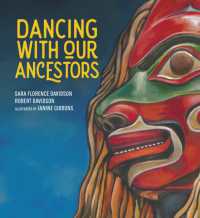Full Description
The American College of Sports Medicine (ACSM) and body composition experts Timothy Lohman and Laurie Milliken have teamed up to bring you a complete practical guide to performing body composition assessments.
ACSM's Body Composition Assessment provides you with foundational information and scientific research that can be applied in the fields of medicine, exercise science, nutrition, growth and development and geriatrics.
This comprehensive guide delves into the methodology of a number of techniques. These include DXA, BIA, ultrasound, underwater weighing, ADP, total body water and BMI. The text uncovers the sources of error that are common in each measurement technique.
Researchers and clinicians will benefit from the book's detailed descriptions of methods for use in both laboratory and field settings. As well as protocols for the standardization of each method and their advantages and limitations.
The text thoroughly examines the health implications of body composition by looking at the relationships between chronic disease and total body fat, fat distribution, muscle mass and bone density. It also gives you the ability to assess changes in a person's body composition over time.
Contents
Chapter 1. Introduction to Body Composition and Assessment
Timothy G. Lohman, PhD; Laurie A. Milliken, PhD, FACSM; and Luis B. Sardinha, PhD
Errors in Body Composition Measurement and Assessment
Validation and Cross-Validation Studies
Body Composition Terms and Concepts
Summary
Chapter 2. Body Composition Models and Reference Methods
Jennifer W. Bea, PhD; Kirk Cureton, PhD, FACSM; Vinson Lee, MS; and Laurie A. Milliken, PhD, FACSM
Levels of Human Body Composition
Models of Human Body Composition
Total Body Potassium Counting and Neutron Activation Analysis
Imaging Methods
Summary
Chapter 3. Body Composition Laboratory Methods
Robert M. Blew, MS; Luis B. Sardinha, PhD; and Laurie A. Milliken, PhD, FACSM
Densitometry
Total Body Water
Total Body Potassium Counting
Dual-Energy X-Ray Absorptiometry
Ultrasound
Summary
Chapter 4. Body Composition Field Methods
Leslie Jerome Brandon, PhD, FACSM; Laurie A. Milliken, PhD, FACSM; Robert M. Blew, MS; and Timothy G. Lohman, PhD
Skinfolds
Circumferences
Bioelectric Impedance Analysis
Use of Weight and Height Indexes to Estimate Body Composition
Summary
Chapter 5. Assessing Measurement Error
Vinson Lee, MS; Leslie Jerome Brandon, PhD, FACSM; and Timothy G. Lohman, PhD
Types of Measurement Error
Intra- and Interobserver TEM/CV of Various Body Composition Measurement Methods
Reducing Error Associated With Field Methods
Summary
Chapter 6. Estimation of Minimum Weight
Timothy G. Lohman, PhD; and Kirk Cureton, PhD, FACSM
Estimating Minimum Weight in Wrestlers
Laboratory Methods for Estimating Minimum Weight
Field Methods for Estimating Minimum Weight
Summary
Chapter 7. Applying Body Composition Methods to Specific Populations
Jennifer W. Bea, PhD; Timothy G. Lohman, PhD; and Laurie A. Milliken, PhD, FACSM
Laboratory Methods
Field Methods
Summary
Chapter 8. Body Composition Applications
Vanessa Risoul-Salas, MSc, RD; Alba Reguant-Closa, MS, RD; Luis B. Sardinha, PhD; Margaret Harris, PhD; Timothy G. Lohman, PhD; Nuwanee Kirihennedige, MS, RD; and Nanna Lucia Meyer, PhD, FACSM
Nutritional Status
Competitive Sports and Exercise Training
Body Composition and Eating Disorders
Body Composition and Weight Loss
Body Composition, Chronic Disease, and Aging
Other Applications
Summary







